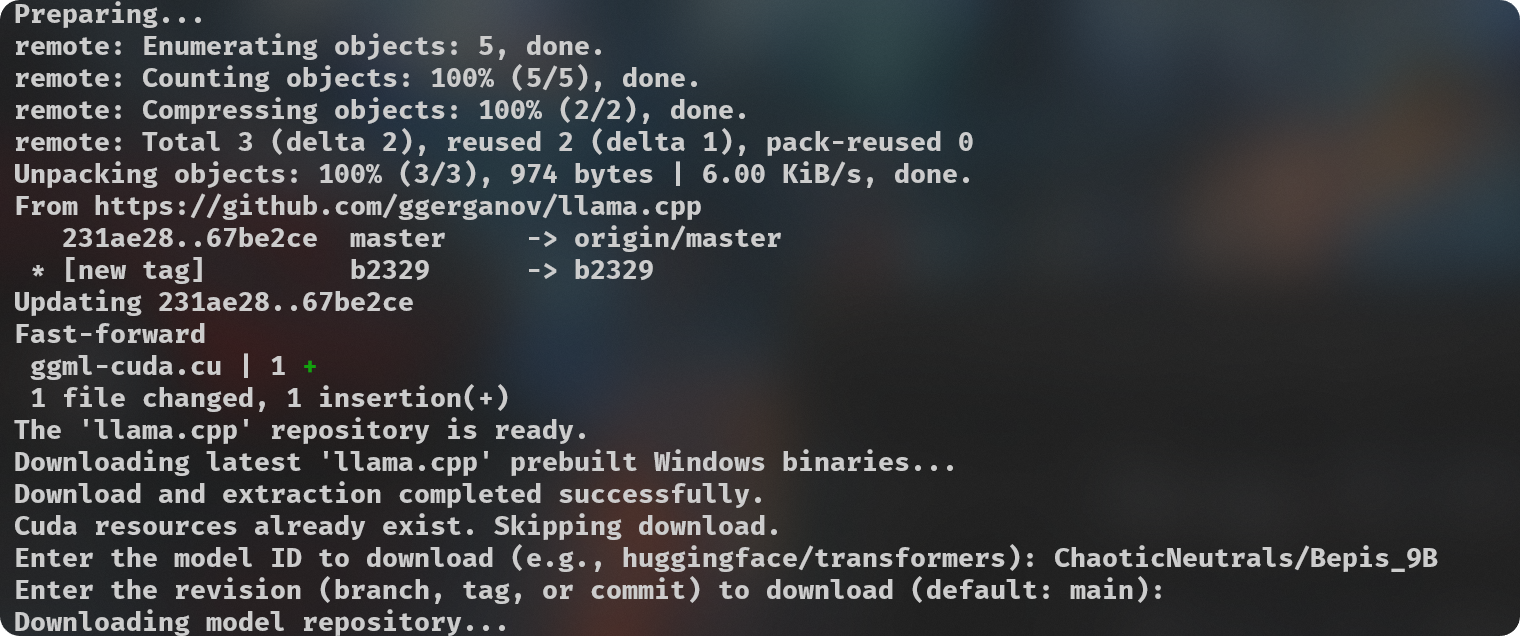AetherArchitectural Community:
Now at AetherArchitectural/GGUF-Quantization-Script.Credits:
Made with love by @Aetherarchio/@FantasiaFoundry/@Lewdiculous with the generous contributions by @SolidSnacke and @Virt-io.
If this proves useful for you, feel free to credit and share the repository and authors.
Linux support (experimental):
There's an experimental script for Linux,gguf-imat-lossless-for-BF16-linux.py[context].
While I personally can't attest for it, it's worth trying and you can report how well it worked, or not, in your case.
Improvements are very welcome!
Pull Requests with your own features and improvements to this script are always welcome.
GGUF-IQ-Imatrix-Quantization-Script:
Simple python script (gguf-imat.py - I recommend using the specific "for-FP16" or "for-BF16" scripts) to generate various GGUF-IQ-Imatrix quantizations from a Hugging Face author/model input, for Windows and NVIDIA hardware.
This is setup for a Windows machine with 8GB of VRAM, assuming use with an NVIDIA GPU. If you want to change the -ngl (number of GPU layers) amount, you can do so at line 124. This is only relevant during the --imatrix data generation. If you don't have enough VRAM you can decrease the -ngl amount or set it to 0 to only use your System RAM instead for all layers, this will make the imatrix data generation take longer, so it's a good idea to find the number that gives your own machine the best results.
Your imatrix.txt is expected to be located inside the imatrix folder. I have already included a file that is considered a good starting option, this discussion is where it came from. If you have suggestions or other imatrix data to recommend, please do so.
Adjust quantization_options in line 138.
Models downloaded to be used for quantization might stay cached at
C:\Users\{{User}}\.cache\huggingface\hub. You can delete these files manually if needed after you're done with your quantizations, you can do it directly from your Terminal if you prefer with thermdir "C:\Users\{{User}}\.cache\huggingface\hub"command. You can put it into another script or alias it to a convenient command if you prefer.
Hardware:
- NVIDIA GPU with 8GB of VRAM.
- 32GB of system RAM.
Software Requirements:
- Windows 10/11
- Git
- Python 3.11
pip install huggingface_hub
Usage:
python .\gguf-imat-lossless-for-BF16.py
Quantizations will be output into the created models\{model-name}-GGUF folder.
